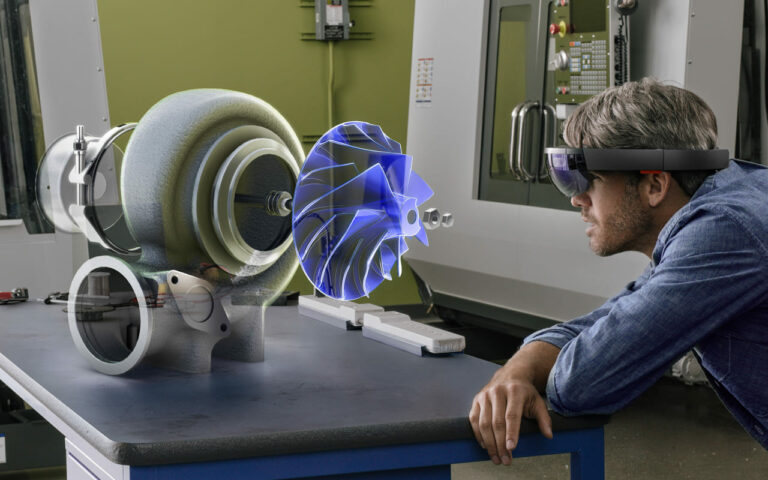The Future Of Augmented Collaboration In Civil Engineering Design

Augmented and Cross Reality (ACR) technology has the potential to revolutionize numerous industries. From gaming to healthcare, education to design, this emerging field is breaking new ground in how we experience the world around us.
In simple terms, Augmented Reality (AR) refers to the superimposition of virtual elements onto the real world. By using a smartphone or computer, users can view digital images, videos or 3D models that appear to exist in the physical environment. Cross Reality (XR) is a more advanced form of AR that enables users to interact with the digital elements and manipulate them in real-time, blending the lines between the virtual and physical world.
The possibilities of ACR are endless. In the world of gaming, players can explore virtual worlds that exist alongside the real world, making the experience more immersive and interactive than ever before. For example, Pokemon Go used AR technology to allow players to catch their favourite Pokemon in real-world locations. But ACR is not just limited to gaming.
In the medical field, AR can be used to create interactive simulations that help doctors and medical students visualize complex procedures. This can lead to better understanding and more accurate diagnosis and treatment plans. Similarly, designers and architects can use XR technology to create immersive visualizations of their designs, helping clients to better understand the designs and make more informed decisions. Educators can use AR to create interactive lessons that engage students in the learning process, making the experience more dynamic and interesting.
With so many possibilities, it's understandable that people have questions about ACR. Here are some of the most commonly asked questions:
What is the difference between VR and AR?
Virtual Reality (VR) is a fully immersive experience that completely replaces the real world with a virtual one. Users wear a headset that tracks their movements and allows them to interact with the virtual environment. AR, on the other hand, overlays digital elements onto the real world without completely replacing it. Users can still see the real world while interacting with the virtual elements.
What devices are needed for ACR?
Most modern smartphones and computers have the capability to support AR and XR technology. Specialized headsets are available for a more immersive experience, but they are not necessary.
What industries are using ACR?
ACR technology is being used in a variety of industries including gaming, healthcare, education, design, and entertainment.
Is ACR safe?
ACR technology is generally considered safe. However, it's important to use the technology responsibly and be aware of potential risks such as eye strain and disorientation.
How can I get started with ACR?
There are many resources available online to help you get started with ACR, including tutorials, forums, and software development kits. Many popular apps like Snapchat and Instagram also offer AR filters that you can experiment with.
What does the future hold for ACR?
The future of ACR is exciting. As the technology continues to develop, we can expect to see more advanced applications in a variety of industries. The development of 5G networks will also make it easier for users to access ACR experiences on their mobile devices, opening up even more possibilities.
In conclusion, Augmented and Cross Reality technology is an exciting field that has the potential to revolutionize numerous industries. From gaming to healthcare, education to design, the possibilities are endless. It's an exciting time to be involved in this emerging field, and we can't wait to see what the future holds.


Post a Comment for "The Future Of Augmented Collaboration In Civil Engineering Design"